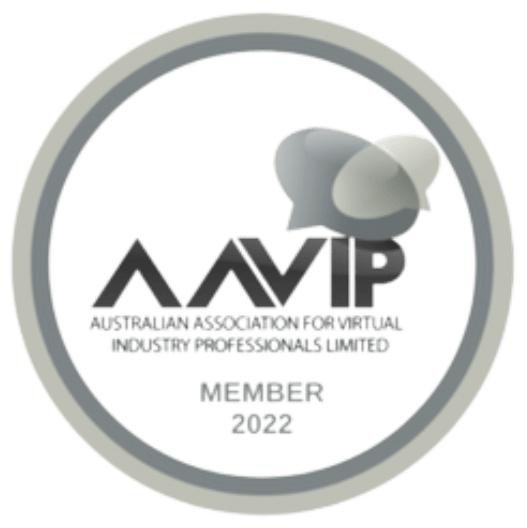Whether you’re a seasoned copywriter or a business owner just starting out, there’s a copywriting formula to suit everyone’s needs. We look at a few tried and tested copywriting formulas that are easy to replicate, will motivate you to keep writing, and speed up your writing process. As a result, you’ll be in a better position to boost engagement, influence consumer buying decisions, and build brand memorability. We also offer some tips to help you experiment with style and content.
The Four C’s of Copywriting
You may have heard of the universal ‘Four C’s’ formula that outlines that all copywriting should be clear, concise, compelling, and credible. It’s a great introductory formula for newbie writers or a foundation formula that copywriters can refer to before introducing additional formulas.
Quick Step Guide
- Demonstrate clarity by ensuring your copy is clear enough for everyone to understand (no more complex language).
- Be concise by conveying information in the simplest terms (and in the least amount of words).
- Make it compelling by writing copy that’s genuinely interesting (and relevant) to your target audience.
- Build credibility in your copy by demonstrating your reliability, believability, and trust.
Here’s a great 4 C’s example:
Pact Clothing is a leading sustainable fashion brand whose website copy is an excellent example of the Four C’s formula. First, they demonstrate clarity in their copy by using simple, inclusive language in their headlines, body copy, and CTAs. They use concise language to describe complex topics (e.g., the circular fashion model and environmental sustainability), whilst communicating their business goals. They use compelling copy with headlines such as, ‘Sunrise to Sunset’ to express the longwear retail benefits of the company. They build brand credibility by referencing their Fair Trade certification and business partnerships to demonstrate their contribution to creating a more sustainable future.
Here’s some tips:
1. Clarity
- Ensure your sentences are short and easy to follow for your consumers.
- Opt for shorter words over longer words which may confuse consumers or complicate your writing.
- Use headers and bullet points to break up chunked text and regain the attention and focus of your readers.
2. Concise
- Read your copy out loud to identify any awkward phrases or lengthy sentences that convolute readers and reduce readability.
- Draft and redraft your copy to ensure you’re maximising meaningfulness in your copy (in the least amount of words possible). Online Grammar checkers, like Grammarly, can speed up your editing time.
3. Compelling
- Do your audience research so you know how to tailor your copy to get the attention of your consumers.
- Take insights from your consumer audience research (e.g., their needs, problems, and desires) and transform them into attention-grabbing headlines.
- Put yourself in your consumer’s shoes and ask yourself if this is really interesting and if you would invest your time reading it.
4. Credible
Use the AIDA model to drive action and persuade consumer behaviour
Another crucial but simple formula that anyone can use in their copywriting is the AIDA formula: Awareness, Interest, Desire, and Action. It’s a great one to use if you’re intent on driving consumer action whether it be, increasing sales or strengthening your brand presence.
Here’s a great AIDA example:
Apple, often described as the holy grail of marketing and advertising, leveraged the AIDA model to launch the Apple Watch in 2014. At the awareness stage, Apple announced a product launch with a clear and simple headline, “The Watch is coming.” This copy generated intrigue (and hype around the product) while building consumer expectations. Tim Cook created interest in the Apple Watch by launching it with a surprise iPhone 6 and discussed the varying brand and product body styles. From there, the team developed consumer desire by promoting a healthy lifestyle and discussing key health features (e.g., heart rate sensor technology). Consumers were then offered a pre-booking option which created urgency, emanated product exclusivity, and mobilised them into action. It also secured post-launch sales for Apple.
Quick Step Guide
- Garner awareness around your brand, business product, or service that attracts the attention of your target consumer audience.
- Develop interest in your business by using clear and succinct language to communicate the offering to your consumers.
- Build desire in your consumers by highlighting the key product benefits and the unique selling proposition of your product or service.
- Motivate action by providing consumers with a clear, simple path to purchase.
Here’s some tips:
1. Awareness
- Consider the individual impact that traditional advertising methods (e.g., print or radio advertising), or digital advertising methods (e.g., banner ads and social media ads), will have on your target consumer audience.
- Consider the location and timing of your marketing and advertisements and how this can influence your audience.
2. Interest
- Use short, crisp language to communicate your offering to consumers.
- Consider the message that your language and your TOV conveys to consumers your specific offering and your business.
3. Desire
- Experiment with persuasive language (e.g., in headlines) to build urgency and consumer need. You want your consumers to think they need your product now, or they might miss out.
- Identify the unique benefits of your product by evaluating those of your competitors and differentiating your brand with the creative copy.
4. Action
- Before you start writing, revise your consumer journey and ensure the path to purchase is free of any speed bumps.
- Draft and redraft a few call to actions (CTAs) (e.g., CTA buttons) that are simple and clear for your consumers.
- Use clear, direct links or instructions to fast-track your consumers to your end goal, whether it be a sale, a follow, or an impression.
Remind and rub in your consumer problem with the PAS formula
The Problem, Agitate, Solution (PAS) is a fantastic formula to use if you’re a business owner who understands your consumer problems inside and out and wants to cut to the chase (e.g., make that sale). It’s equally helpful for writers struggling to identify their consumers’ problems, as it forces them to reflect on their audience’s needs and frustrations and how your product or service can solve them.

Here’s a great PAS example:
Dollar Shave Club’s viral marketing video is an excellent PAS example. The brand identifies the consumer problem, which is the high cost of razors, then agitates the problem by showcasing the ridiculousness of spending $20 per month on low-quality razors (with unnecessary frills). Their solution? To invest in their subscription model for just $1 per month.
Quick Step Guide
- Identify the problem by researching any frustrations your prospective or current consumers are facing.
- Agitate the problem by brainstorming creative ways you can bring it to their attention and exaggerate it.
- Present the solution by offering ‘the fix’ your consumers need with clever, thoughtful copy.
Here’s some tips:
1. Problem
- Interview your consumers in person or online (e.g., via an anonymous questionnaire) to gather unique and genuine insights in real-time.
- Consider the different types of problems your consumers are or might be facing, including those relating to your product or service category (like the Dollar Shave example), within the buyer’s context or during the purchasing process.
2. Agitate
- Practice writing headlines that exaggerate the problem/s further. Play with different words and phrases that build urgency and intensity for your consumers.
- If you want to veer away from negativity, try agitating the problem/s by using humour (like the example above).
3. Solution
- Brainstorm various solutions that your business can offer your consumers.
- Take these ideas and write them out in different ways (e.g., that evoke simplicity (e.g., a ‘quick-fix’ or humour).
- Consider what advertising and marketing platforms are best suited to your ideas (e.g., a video format, website copy, social media copy, or even a billboard) and review them according to your budget.
Now that’s a whole lot of tips! We look forward to seeing you put them into practice. If you’d like to learn more about the copywriting and marketing services we provide,
get in touch. 







